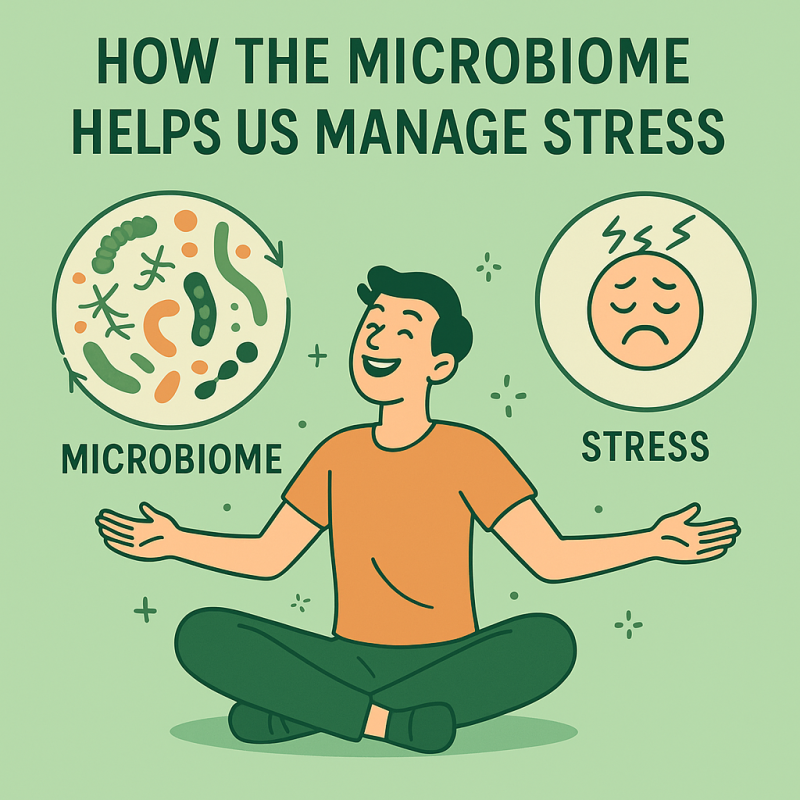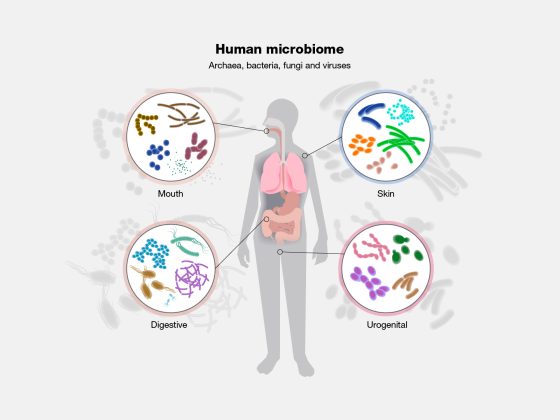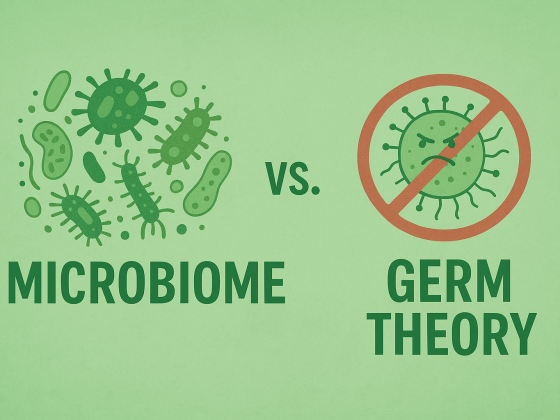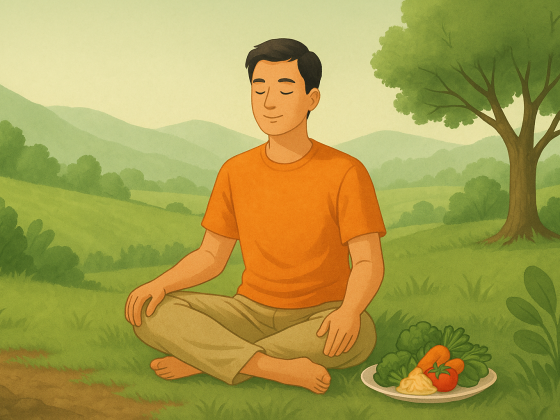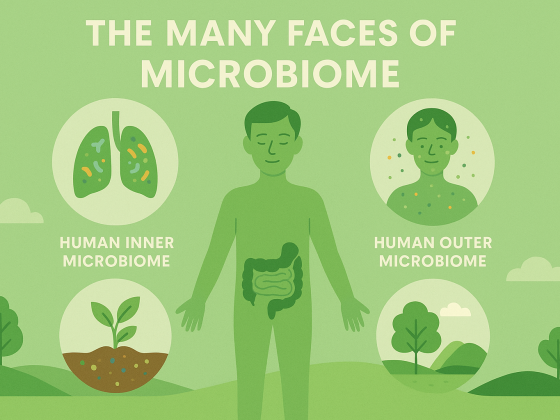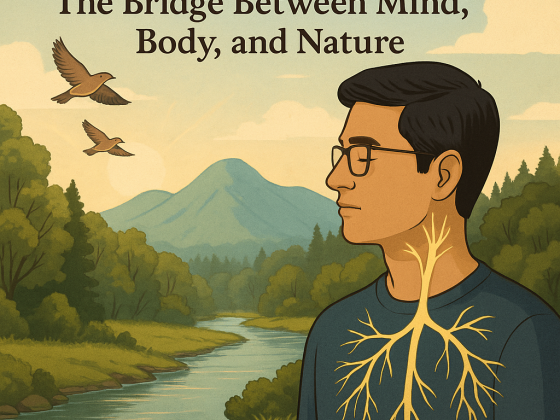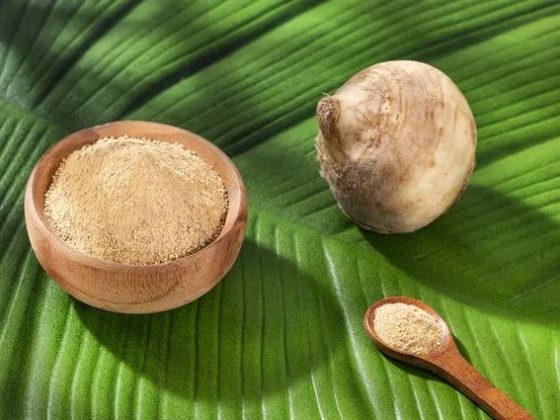When I first heard the word microbiome, it felt like a scientific term, distant and difficult. But the more I studied and lived with this knowledge, the more I realized it is not just science—it is life itself. The microbiome is the collection of trillions of microorganisms living in and around us, mainly in our gut, but also on our skin, mouth, and even in the air we breathe. These microorganisms are not enemies. They are friends, caretakers, and silent healers. Over the years, I have come to see the microbiome as a guiding force that holds our health together, from digestion to immunity, and even to the way we handle stress. Dr. Awadhesh Pandey, whose teachings deeply shaped my understanding, always described the microbiome as a “living universe within us.” He believed that this inner world governs not only physical health but also our emotional resilience. According to him, when we treat our microbiome with respect, balance follows—not only in the body but also in the mind. Today, modern science confirms what he saw years ago: the microbiome and stress are interconnected in powerful ways.
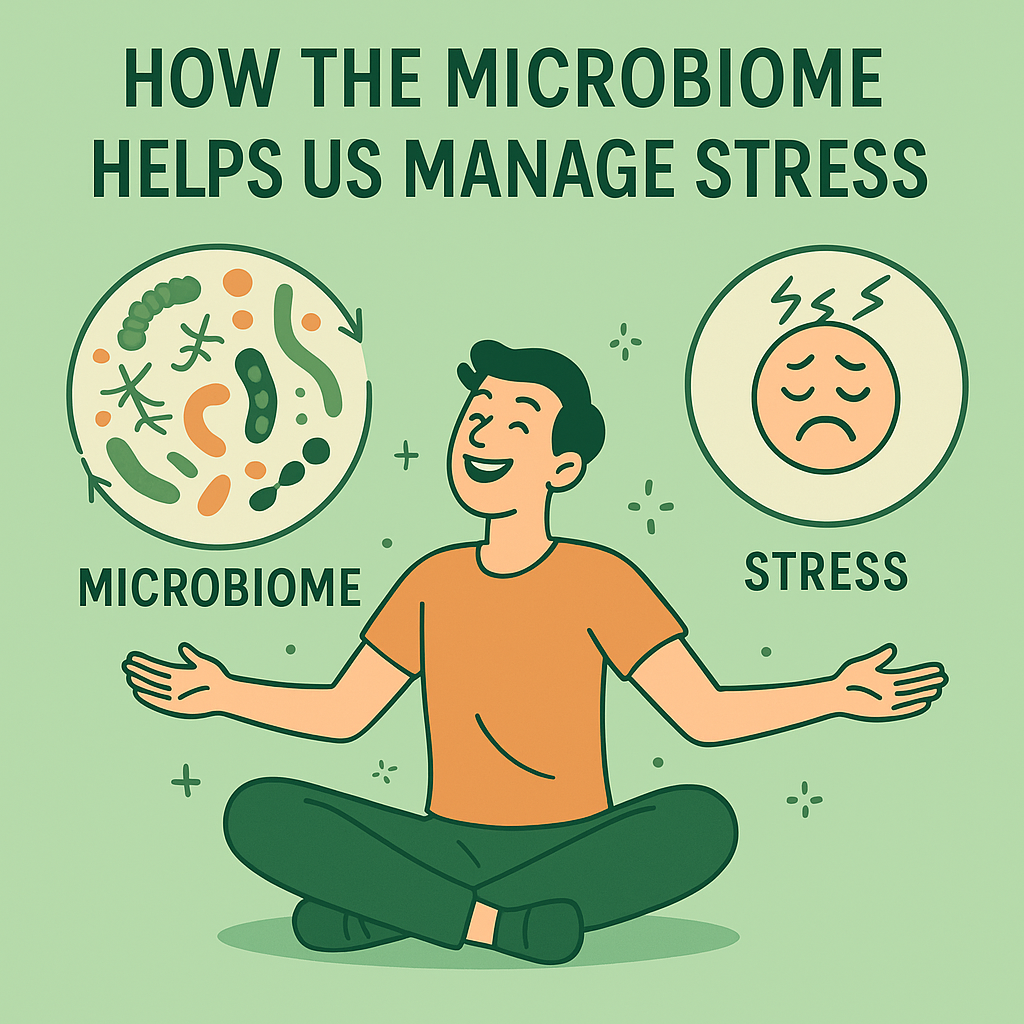
Stress and the Human Condition
Stress is not new. Human beings have always lived with it. From survival in the wilderness to today’s pressures of deadlines, finances, and relationships, stress remains constant. But the way our body manages stress is deeply influenced by what happens in our gut. When stress rises, our brain signals the release of hormones like cortisol and adrenaline. These hormones prepare us for survival but, if prolonged, they disturb sleep, weaken immunity, and upset digestion. Here is where the microbiome enters quietly, like a wise friend. The bacteria in our gut interact with the nervous system, regulate the production of neurotransmitters like serotonin and GABA, and communicate with the brain through what scientists call the gut-brain axis. Nearly 90% of serotonin, the “feel-good chemical,” is produced in the gut, not the brain. Without a balanced microbiome, this production falters, and stress becomes heavier on us.
The Gut-Brain Axis: A Two-Way Conversation
I often think of the gut-brain axis as a telephone line. On one end sits the brain, on the other, the gut. They constantly exchange messages, shaping how we think, feel, and respond to life. The microbiome is the operator of this line, managing signals, calming down unnecessary alarms, and ensuring harmony. When stress becomes overwhelming, the gut often responds immediately: stomach upset, bloating, diarrhea, or loss of appetite. Many people ignore this connection, but it is the body’s way of showing that the mind and gut are deeply linked. Research now proves that specific bacterial strains help reduce anxiety, improve mood, and enhance clarity of thought. This is why probiotics and fermented foods are studied not only for digestion but also for their ability to reduce psychological stress. Dr. Pandey always insisted that the gut is not just a digestive organ but a second brain. He often said, “If you want to calm your mind, heal your gut first.” His wisdom resonates even more strongly now, as science unfolds the truth behind his simple words.
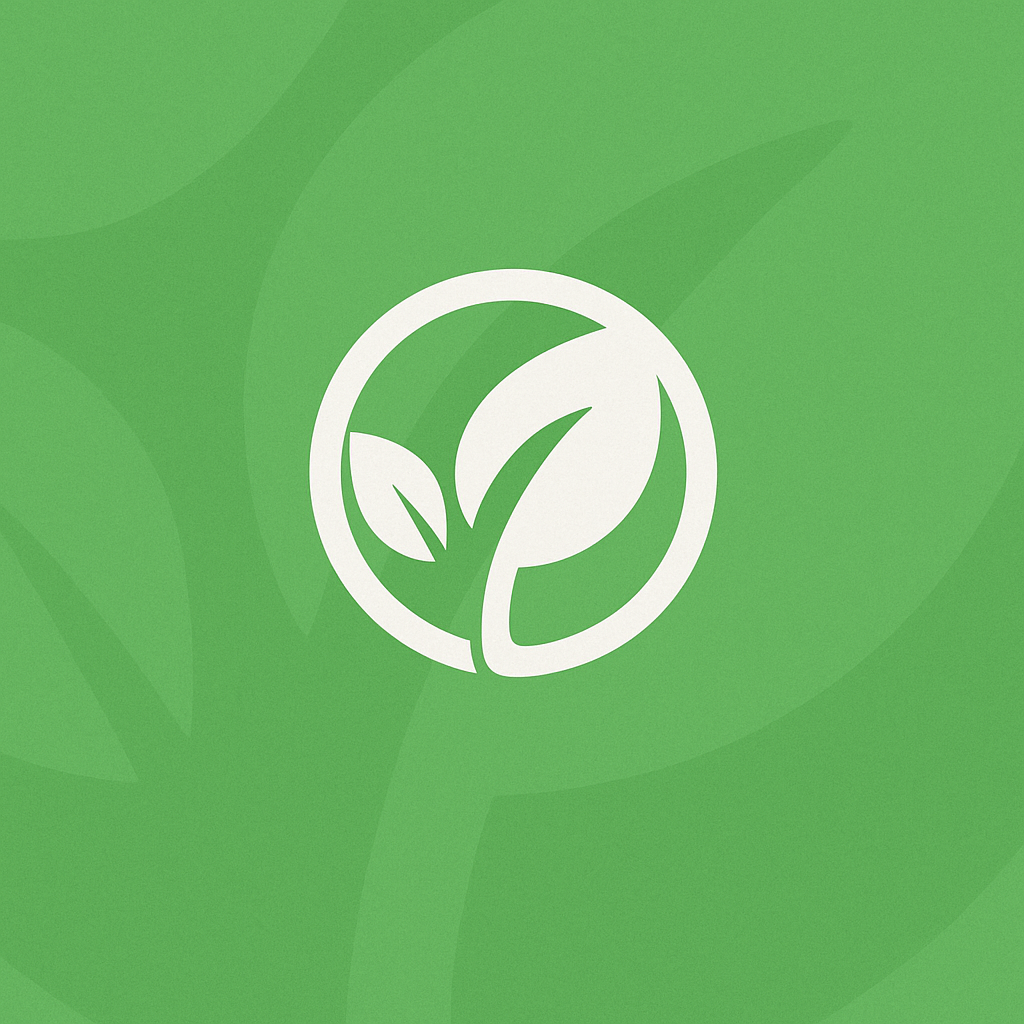
Microbiome as a Stress Regulator
The microbiome manages stress in multiple ways. First, by producing neurotransmitters such as serotonin, dopamine, and GABA, which directly calm the nervous system. Second, by regulating inflammation. Chronic stress often inflames the body, but healthy gut bacteria produce short-chain fatty acids that reduce inflammation and keep our immune system balanced. Third, by supporting the hypothalamic-pituitary-adrenal (HPA) axis—the system that controls our stress hormones. When the microbiome is balanced, cortisol levels stabilize and we recover from stress more quickly. I see the microbiome as an inner orchestra. Each species of bacteria plays its instrument, and when they are in harmony, the music of resilience fills our body. But when imbalance occurs, the orchestra goes out of tune, and stress feels louder and harsher.
How Modern Research Supports This Connection
Scientists worldwide are exploring what Dr. Pandey already believed: the microbiome shapes mental health. In recent studies, participants who followed a “psychobiotic diet”—rich in whole grains, fruits, vegetables, and fermented foods—reported lower stress levels in just four weeks. Other research shows that people who consume probiotics regularly feel calmer and experience better sleep. Even animal studies reveal that mice without gut bacteria are more anxious and less able to cope with stressful conditions. These findings confirm that the microbiome is not a passive passenger in our body. It is an active partner, shaping our mental resilience. For me, this is not just research; it is lived experience. When my gut feels balanced—when I eat mindfully, rest well, and spend time in nature—stress feels lighter, almost manageable. But when I neglect my lifestyle, stress becomes heavy, proving again that the microbiome is at the heart of our emotional stability.
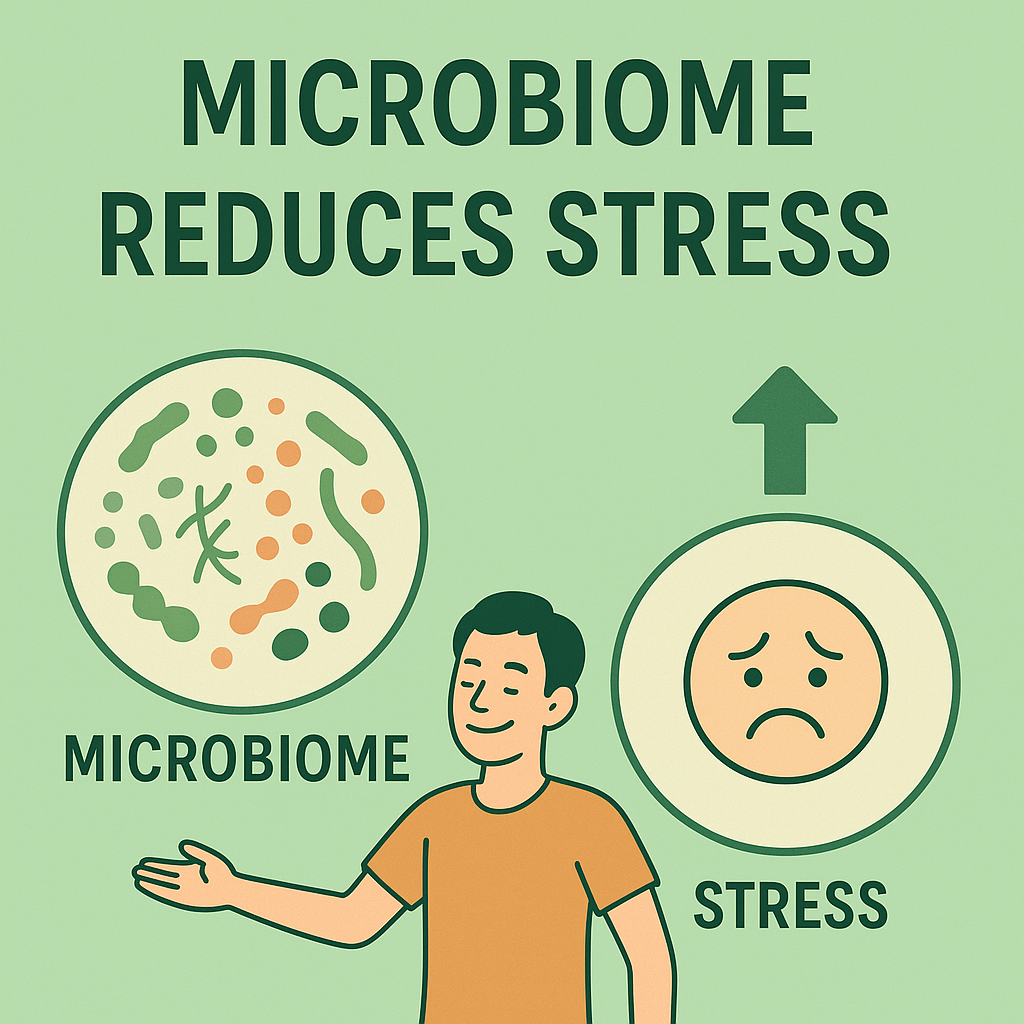
Internal and External Microbiome in Stress
There are two kinds of microbiomes: internal and external. The internal one lives inside our body, mainly in the gut, and plays the central role in stress regulation. The external microbiome surrounds us—on our skin, in the air, in the soil. Dr. Pandey often reminded us that walking barefoot on soil, breathing in fresh air, or touching plants are not just spiritual acts but biological nourishment. These external microbes interact with our immune system and indirectly affect our stress resilience. When we isolate ourselves too much from nature, we cut off this external support. Stress thrives in sterile, artificial environments. But when we reconnect with natural surroundings, we invite beneficial microbes to rejoin us, strengthening our entire ecosystem.
Personal Reflections: Healing Through the Microbiome
I remember a time when stress was consuming me. Sleepless nights, racing thoughts, and constant fatigue had become normal. It was only when I began to heal my gut—choosing natural foods, listening to Dr. Pandey’s guidance on simplicity, and respecting my internal ecosystem—that I began to notice change. My digestion improved first, then my mood slowly lifted, and finally, stress no longer dominated me. It was as if a silent community inside me had stood up to protect me. This experience convinced me that the microbiome is more than a medical concept—it is a partner in our daily life. Stress may be unavoidable, but how we respond depends largely on the strength of our inner microbial allies.
Building Resilience Through Microbial Care
The path to stress management through microbiome care is simple yet profound. It is not about complex treatments but about respecting balance. When we eat fiber-rich foods, fermented dishes like yogurt or kimchi, and minimize processed sugar, we feed our friendly microbes. When we spend time outdoors, walk on grass, or breathe in natural air, we invite external microbes to support us. When we manage sleep and avoid unnecessary antibiotics, we allow diversity in our gut to flourish. All these small acts build resilience—not by fighting stress directly, but by equipping our body to handle it with calmness. Dr. Pandey often said, “Nature heals in whispers, not in noise.” The microbiome is that whisper, quietly shaping how we meet stress each day.
Conclusion: Microbiome as Our Silent Therapist
Stress is a universal reality, but it doesn’t have to control us. The microbiome, both internal and external, acts like a silent therapist, guiding us through the storms of life. From hormone regulation to neurotransmitter production, from immune balance to emotional clarity, our microbial friends stand with us in every moment. In my journey, I have learned to see the microbiome as a mirror of life itself: diverse, interconnected, and powerful. The teachings of Dr. Awadhesh Pandey remind me that health is not just the absence of disease but the presence of harmony—inside and outside. Stress may knock at the door, but with a balanced microbiome, we have the strength to open it calmly, listen, and let it pass without losing our peace. For me, writing this is not just sharing knowledge—it is gratitude. Gratitude for the silent companions inside me who protect me every day. Gratitude for the wisdom of teachers like Dr. Pandey who showed the way. And gratitude for nature itself, which continues to heal in ways science is only beginning to understand.
